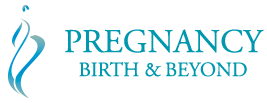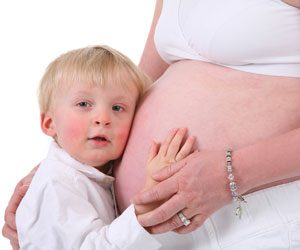
Introduction
The intense nature of labour means most women will look for and use some form of pain relief during their childbirth. For those women who prefer to avoid or minimise the use of medical analgesia, acupressure is a safe, effective, drug-free alternative.
The degree of assistance that acupressure provides varies from woman to woman. While almost all women think it is helpful, on the other end of the scale women use words like ‘lifesaving’ and ‘magic’ when raving about the effects.
It is my experience that women who use acupressure consistently report a significant reduction in the degree of pain and the length of contractions they experience during childbirth.
There are numerous advantages to using acupressure. Acupressure is non-invasive. Acupressure does not produce any of the undesirable or potentially harmful maternal and fetal side effects associated with pharmacological pain relief. It promotes partner involvement, requires minimal instruction and can be taught as part of routine antenatal care and childbirth education. It doesn’t interfere with a woman’s freedom of movement during labour. Also, It can be used in all birth settings, including water birth.
What is acupressure?
Acupressure is a simple, safe and effective hands-on technique originating in China that involves the manual stimulation of specific points, known as Acupoints, on the body by applying pressure to them using the fingers, elbows, palms, or blunt-tipped instruments. The aim of acupressure is to relieve pain and discomfort, and to promote healing.
Over 4000 years ago, long before the advent of skin penetration using acupuncture needles, ancient Chinese medicine doctors would pinch, rub, press and scrape designated points on the body to stimulate energy circulation. As such acupressure became the precursor to acupuncture.
Point selection, the rationale
Traditional Chinese Medicine (TCM) is a rational, pragmatic medicine and any treatment is carefully selected for the greatest possible effect. Fortunately, the selection of a handful of useful acupoints to assist labour and childbirth has been thoroughly researched by our predecessors. These points have been tried and tested over centuries and are still used because they are so effective.
Applying direct pressure to acupoints during labour will have the effect of reducing pain naturally, allowing the woman to settle more comfortably into the strong sensations experienced during contractions and encouraging her to work more consciously and confidently with her body rather than recoiling from and resisting pain.
Acupressure uses the same points that would be normally used for acupuncture.
For example, Gall Bladder 21* is classically known to have a descending action and is therefore excellent to induce labour and benefit the letting down of breast milk. It also has an analgesic effect making it ideal for use during labour.
Other points are selected because contemporary empirical observation has proven them to be effective. For example, the forte of Kidney 1 is to settle and calm the mind of women who are experiencing fear and panic during labour. It is especially useful for women who have experienced previous birth trauma and are scared.
Points can also be combined to increase or enhance the therapeutic effect. The combination of Large Intestine 4 and Liver 3 (also known as the four gates) has a potent effect which will open the flow of energy from all corners of the body and facilitate the smooth passage of birth. This combination is very useful in cases of non-progressive labour or when women have become distressed with pain and are resisting their contractions.
Sometimes localised tender points, called ‘ashi’ points, are used simply because they are sore. These points commonly appear in the lower back, sacral and lumbar regions during labour. A woman will generally be able to guide her partner to apply pressure to these areas.
The most potent analgesic acupressure points used in labour are typically forbidden for use during pregnancy because they can cause miscarriage. They are not to be massaged or acupunctured before labour; however, they are safe for use during labour as labouring women are no longer deemed to be pregnant.
Easy to learn and teach
With basic, clear instruction and demonstration, acupressure is easy and quick to learn. It takes about 15 minutes and students will then be able to teach it immediately. No previous TCM knowledge, experience or healing aptitude is required and you don’t have to be a trained acupuncturist to use or teach the technique.
Acupressure doesn’t require expensive, difficult-to-operate gadgets or equipment. An ability to apply firm downward pressure (not massage) using the thumbs, knuckles and elbows is all that is required. Alternatively, the blunt end of a wooden spoon found in the kitchen cupboard doubles as a suitable acupressure implement.
Acupressure can be taught as part of routine antenatal care in one-on-one situations and in any childbirth education class, private, public, hospital or non-hospital. Whilst it is desirable for women and their support people to have learnt and practised acupressure in advance, it is possible to teach during labour.
Basic instructions for use
Once instructed on point location and how to apply pressure, support people are advised to commence acupressure in early labour so that women become accustomed to tolerating the pressure used. It is not possible to replicate the pressure required prior to labour.
Acupressure points should be used in rotation during the labour according to the women’s feedback, tolerance and comfort level. Attention should be placed on the points that she finds most relieving. This will be different for each woman.
If support people are not confident with point location, then indelible ink pen can be used to mark the acupressure points before labour begins. Beyond this, support people should be guided by the woman’s instruction of what is working for her at the time.
Undesirable side-effects
Bearing in mind the sliding scale of what women perceive as painful during labour, the most undesirable side-effect of acupressure is excessive pain due to pressure at the site of application. This can be easily stopped or modified at the time through partner feedback. Most women, however, will prefer the pain of acupressure over the pain of contraction because acupressure usually dramatically ameliorates the intensity and duration of the contraction. Apart from temporary localised bruising of the skin which can result from sustained, overzealous or heavy-handed pressure, no other harmful side-effects of acupressure have been reported.
In conclusion
Acupressure is a safe, natural, easy-to-learn and applies technique that can significantly ease the pain. It can reduce the length of contractions experienced during childbirth without causing any of the undesirable side effects associated with medical analgesia. Many women will find acupressure useful during labour so it makes good sense for those who regularly attend birth to be familiar with the technique and have it up their sleeve for use when necessary.
It is hoped that the information contained in this article will inspire people attending births to seek acupressure training, learn the technique and share it widely for the benefit of our birthing population.
What else can acupressure treat during labour?
Acupressure, like acupuncture, can be used to treat a variety of other conditions that may arise during labour and childbirth. For example, it can be used to help babies descend and engage. It helps dilate the mother’s cervix, induce labour and strengthen contractions in slow, non-progressive labours. It can also be used to alleviate nausea, and combat fatigue in protracted labour. Also, It assists posterior positioned babies to turn to an optimal anterior position for an easier birth.
* The universal numbering system of point location is used by non-Chinese speaking practitioners. Acupuncture point names are derived from combining their location on a meridian or energy pathway affiliated with an organ (eg: Gall Bladder), and a number, for easy location.
Page revised on 15th December 2021


Hola soy Obstetra y atiendo y acompaño partos naturales y respetados, me interesa información al respecto. Gracias